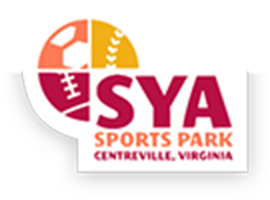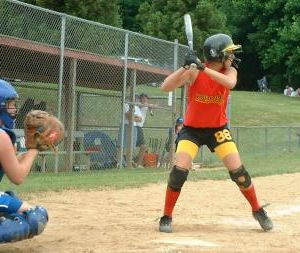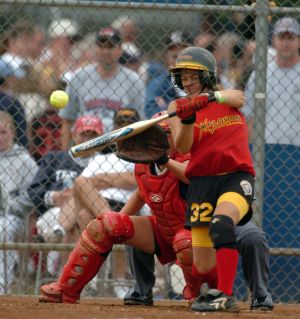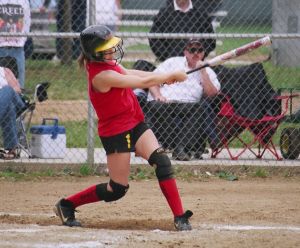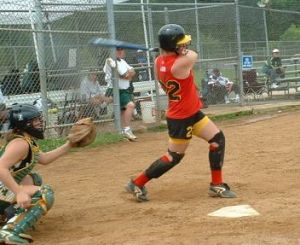SYA Little League Softball Hitting Fundamentals
Hitting Fundamentals
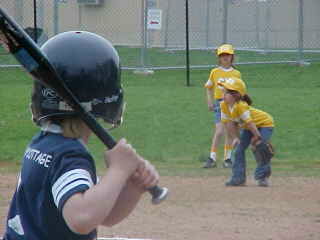
Kids fresh out of tee-ball or coach-pitch softball (hopefully not out of our program) invariably have flaws in their stance, stride, swing and finish — like the tee-baller’s exaggerated wind up before the swing (a rotation instead of a lateral move). Players continue to refine their flaws throughout their “slow-pitch” careers so they can hit the ball harder and farther. Coaches may try to teach better hitting techniques, but kids generally don’t change because they know what works. Then, of course, as the players progress into higher levels of the game, they encounter faster pitchers, and inevitably the techniques that worked in the past become liabilities. Good “slow-pitch” power hitters become lousy fastpitch hitters because:
- the exaggerated wind up or negative move (rotating the arms and shoulders, with little control, before the swing) increases the distance the bat has to cover to reach the hitting zone, and contributes to late, sweeping swings;
- the long stride and the early shifting of too much weight to the front foot locks the hips — as a result, the legs contribute little towards the quickness and power necessary to hit pitches in excess of 50 mph and the player puts herself in a position (with all her weight on her front foot) to be totally fooled by the change-up;
- an early extension of the arms, whether preceded by an exaggerated wind up or not, results in a sweeping swing with no hip turn — the result is slow bat speed and loss of the power generated by the legs.
Teaching the fundamentals necessary to overcome these poor hitting techniques can be a frustrating experience for both coaches and players. All of these flaws inhibit progress in achieving the most important objectives of the fastpitch hitter:
- achieving maximum force with minimal effort
- using live and independent hands
- increasing the speed of the bat throughout the swing – slow to fast speed
- hitting through a long zone – staying on the plane of the pitch as long as possible
Everything about the fastpitch swing must be tailored to achieve these objectives. The discussion that follows highlights the key elements necessary to achieve a fundamentally sound fastpitch swing. These techniques should be taught when the players are young, before they get locked into habits that must be changed as they get older.
All descriptions that follow are for right-handed hitters.
| Grip |
|
| Stance |
|
| Negative Movement |
|
|
Stride
|
|
|
Swing
|
|
|
Finish
|
|
Adjustments during the swing:
-
Inside to outside — prepare for the inside pitch, adjust out
-
High to low — prepare for the high pitch, adjust to low
-
Fast to slow — prepare for the fastball, adjust for the off-speed pitch or change-up
Tip: Soft toss drills and batting cages have their limitations because they do not adequately simulate the difficulty of getting the swing and timing right to hit a pitched ball. As an alternative to these drills, try conducting batting practice in an open area with a minimum number of players necessary to retrieve balls. The coach/pitcher should throw the ball at the same speed encountered in a game and should use a windmill or underhand delivery. Try using baseball or golf ball-sized wiffle balls during this drill to cut down on the number of players needed to retrieve balls. Stand fairly close to the batter when pitching and interrupt the drill as frequently as necessary to provide instruction. Only try to correct one thing at a time. Overcoaching is something to avoid. Becoming a great hitter is a time-consuming process.
Drills:
-
Back arm drill — use a “skip the rock motion” (right elbow leads the hands)
-
Front arm drill — start with bat over right shoulder, lead with left elbow, make sure left elbow stays above the left wrist and the left wrist above the hand
-
Walk through drill — mark back foot, step back out of box diagonally, use crossover step to where back foot should be, step towards tee hitting the ball
About SYA
Quick Links
Sports
Travel Sports
5950 Centreville Crest Lane
Centreville, VA 20121
P.O. Box 471
Centreville, VA 20122

